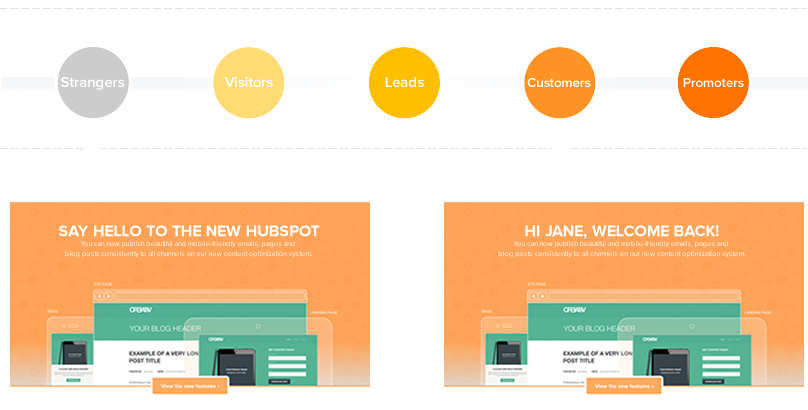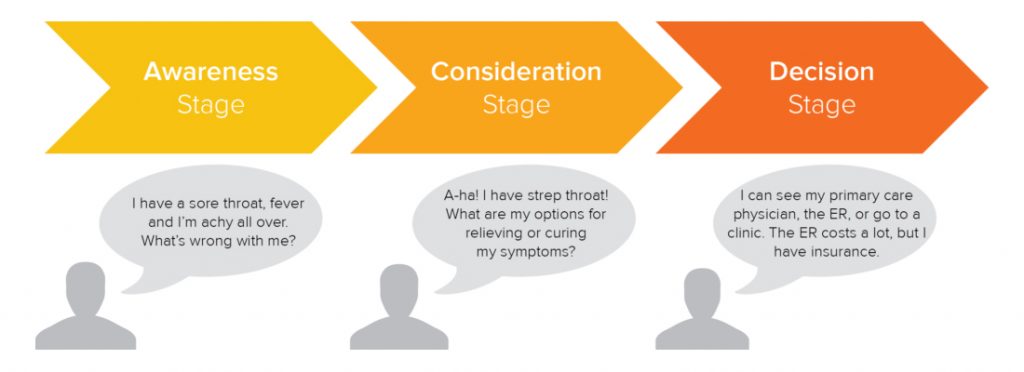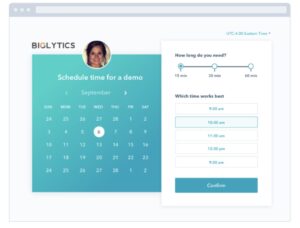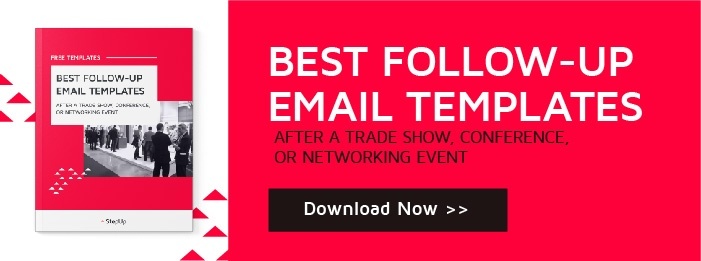At the start of every new year we say to ourselves that this year is going to be different: “This year we will set some real goals and achieve them.” “This year we will be proud of ourselves and blown away by the progress that our business made.”
Yet usually, we wake up on the last day of the year and feel that something went wrong… again! We look at our business and see that we aren’t even close to where we wanted to be this year. We blame our planning, our goal setting, our optimism and our lack of time to handle everything.
So, how can we make this year different?
If you’re serious about seeing significant growth in your business, here are the 12 most important marketing tactics to focus on in 2017:
1) Smart Goals
It is not enough to set goals and simply believe that they will happen (we’ve tried it and been there), we need to set goals that we are fully committed to and passionate about.
In our inbound marketing methodology we use “SMART GOALS” as our compass for the client’s success journey. The SMART goal framework stands for:
- Specific – Your goals should be clear to your team, so that everyone understands what needs to be done and who is responsible for what.
- Measurable – You should be able to check if you have reached your goals exactly by numbers, and not by assumptions.
- Attainable – You should set realistic goals that are actually achievable. . It is very frustrating to fall short of a goal every time – don’t set yourself up for failure!
- Relevant – Your goals must be related directly to your business.
- Timely – Your goals must be mapped out within a specific timeframe.
Without clear and measurable goals your rocket might fly high but actually miss the target! Know what you want to achieve by breaking down your goals “SMARTly” – with details!
2) Quick Wins
Half of all new businesses fail within the first five years – which is why you want to see positive results in your company as soon as possible. You must not depend only on strategies that take months to see progress. Instead, look for marketing activities that can get results fast in order to fuel and motivate both your team and yourself.
Every business has an opportunity to see fast interactions with its audience. The most common tactic is PPC advertising, yet you could find many other options such as flash sale to your email list, viral contests on Facebook, etc. No matter what you’re planning to do this year, start seeing your potential results as fast as possible, in order to build confidence and meet your goals for the year.
3) PERSONALIZATION

Your prospects are becoming less patient to marketing messages that don’t talk directly to their specific problems. In 2017 you should be much more aware of this, and adapt your marketing system to this environment.
For example, if you used to manage direct lead generation campaigns with PPC traffic, in 2017 it is going to be more challenging to get results. There are more and more ads on all digital platforms, the competition is getting fierce and expensive, and the people are more wise and aware of it.
With new technology and smart strategies you can send the right message to the right person at the right time. You need to segment your audience with more specific targeting and personalize your message to their state of mind. For example: Don’t advertise your service or product to the general audience, but instead send relevant and great content, segment them by their interest and interaction and then send them a specific offer, relevant to what they were interested in.
With today’s technology, it’s easier than ever!
4) Multiple Conversion Points
Many companies rely mainly on just one sales funnel, and try to sell the same thing to the same audience over and over again. This can be repetitive, and ineffective.
If you want to see exponential growth this year, you must create several different offers that can be delivered to your prospects in case they don’t convert on your main offer. Once you create different conversion points, you will significantly increase your sales opportunities and therefore your income.
5) Automation
Today’s marketing efforts can seem huge, and overwhelming. If you don’t automate some of your tasks, half of them may not even get done.
So – what are the main things you should automate? Here are some ideas:
- Lead Nurturing: With a well-planned email automation process, you can nurture cold leads and turn them into real sales opportunities.
- Post Scheduling: Whether it’s blog posts or social media content, most of this can be scheduled far in advance so you can let the computer do the work, and focus on the distribution of the content
- Content curation: Use tools such as Google Alerts, Buzzsumo or others to help listen to conversations online that would be of interest to you, chatter around your brand, and industry-related content that is applicable to your audience. This makes it easy for you to share with your listeners.
6) Mapping Your Buyers Journey

There are three stages your prospect goes through before making decision to buy from you. The stages are: Awareness, Consideration and Decision.
If you don’t want to flood prospects with the wrong content and offers, you must map your buyer’s journey very clearly and organize your content planning and campaigns based on his or her buying stage. This makes it easier for you create the right content and lead your prospect through a smart pipeline until they are ready to buy from you.
Overall, a smart sales funnel will help you sell more easily, without being too pushy or aggressive in any stage of the sale.
7) Structured Sales Funnel
Your team is the most important yet most expensive asset in your business. Build a rock-solid sales funnel that will provide your sales team with high-quality leads, thus allowing them to work faster and smarter.
8) MULTI-CHANNEL TRAFFIC SOURCES
You can’t rely solely on one source of traffic. A strong and long-lasting business is always searching for new traffic sources that intelligently interact with one another, creating an unstoppable lead machine.
Each traffic source you use must be analyzed and tracked with a clear ROI report. This sheds light on which one has the highest benefit and where to focus your efforts on.
Multi-channel traffic sources are crucial for sustainable business and must be planned into your growth strategy.
9) Blogging
Research shows that businesses that use blogs generate higher traffic and significantly more leads than those that don’t.
Here are some stats to support it:
- Business blogging leads to 55% more website visitors (Source: Hubspot)
- Small businesses that blog get 126% more lead growth than small businesses that do not blog. (source: Impactbnd.com)
- B2B marketers who use blogs generate 67% more leads per month than those who do not.
- B2C companies that blog generate 88% more leads per month than those that do not.
- On average, companies that blog receive 434% more indexed pages. (Source: Hubspot)
What more reason do you need to start blogging now?

10) Social Media Knock Out
Social media is not just a great source of traffic but also a main platform to engross and build trust with your audience.
Because of this, social media marketing should be an integral part of your businesses’ digital marketing strategy. By having the right social media marketing strategy, your brand can help you stay ahead of your competitor, and engage and interact with your audience, which ultimately will have a huge impact on your business.While using it to create raving fans that genuinely want to spread the word about you to their friends and family., it simultaneously becomes an amazing viral prospects lead machine when used with care and authenticity.
However, social media can backfire if you abuse it with too hard of a sales pitch, or not responding well to your audience; more specifically, unhappy customers.
Use it wisely, use it with care – and use it more often! Social media is dominating the way people communicate around the world.
11) Reports
I have found that so many businesses don’t actually know their numbers. If you don’t know and control your numbers, then odds are you are losing money, or at the minimum not earning as much as you can.
What’s your average sales conversion rate? What is your best traffic source that brings the biggest deals to the business? What is your EPC (Earning per Click) by media?
Do you know the answers to these questions? If not, we need to do some homework – together. It is crucial for you to understand exactly which source brings you money, and where you should invest your next campaign. Yet, without basic reports that will give you control over your business results, this is difficult to do.
12) All Platforms

Mobile, apps, all screen sizes…. nowadays, people have less time and are less patient for non user-friendly interfaces. Adapt yourself to all platforms… or LOSE!
There are tons of responsive websites out there that have poor mobile interfaces. Chances are high that if a mobile user clicks to sign up and is taken to a tiny, non-mobile site asking for too many details, they will lose interest. It is crucial to optimize the conversion funnel for the user. Today more than ever, consider simplifying all of your platforms to make it as simple and easy as possible for all users.
Extra – Inbound Marketing with Hubspot
There is the old way of digital marketing and then there is… Inbound marketing! Inbound marketing is a methodology that creates a solid and long-lasting marketing system for any business. It utilizes all of the 12 points discussed above and fits them it into one great business execution plan.
Hubspot platform helps us manage and control all aspects of the methodology and automates it into the highest level of marketing performance. It even has artificial intelligence that optimizes and tailors each massage, to reach the right audience, at the exact time – converting the best leads you’ll ever get. Amazing!
The sooner you join the Inbound Marketing Movement the faster you’ll see change and growth in your business. Don’t get left behind!















